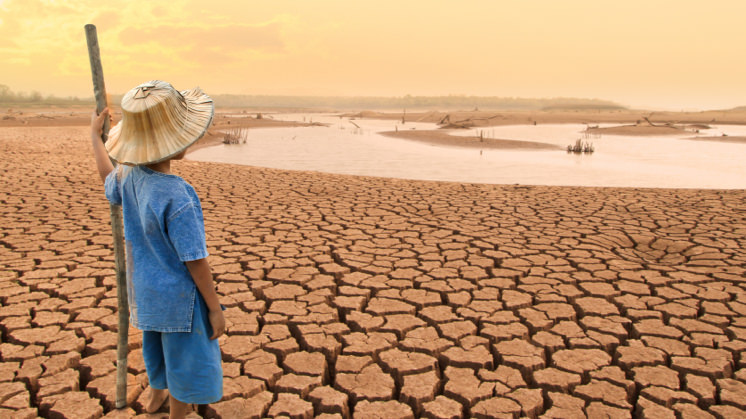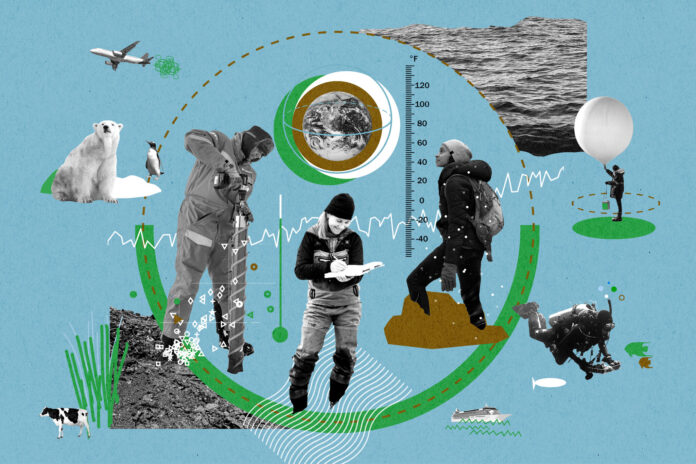Introduction
Climate change is a topic that has gained significant attention in recent years. It refers to long-term shifts in temperature patterns and weather conditions across the planet. While the concept of climate change is not new, our understanding of its causes and implications has evolved through scientific research and evidence. In this article, we will explore the science of climate change, examining the evidence that supports its existence and the factors contributing to its acceleration.
The Greenhouse Effect
To comprehend climate change, we must first understand the greenhouse effect. The Earth’s atmosphere contains greenhouse gases such as carbon dioxide (CO2), methane (CH4), and nitrous oxide (N2O). These gases act as a protective blanket, trapping heat from the Sun and preventing it from escaping back into space. This natural phenomenon is crucial for maintaining a habitable planet by keeping the average global temperature at around 15°C (59°F).
Human Activities and the Enhanced Greenhouse Effect
However, human activities, primarily the burning of fossil fuels, deforestation, and industrial processes, have significantly increased the concentration of greenhouse gases in the atmosphere. The burning of fossil fuels releases substantial amounts of CO2, while deforestation reduces the Earth’s capacity to absorb CO2 through photosynthesis. This excessive emission of greenhouse gases disrupts the natural balance and amplifies the greenhouse effect, leading to global warming and climate change.
Temperature Records and Rising Temperatures
One of the most compelling pieces of evidence for climate change is the rise in global temperatures. Scientists have been collecting temperature data from various sources, including weather stations, satellites, and ice cores. These records consistently show an upward trend in average global temperatures over the past century.
According to the Intergovernmental Panel on Climate Change (IPCC), the average global temperature has increased by approximately 1°C (1.8°F) since the pre-industrial era (late 19th century). While this may seem like a small increase, even small changes in global temperature can have profound effects on ecosystems, weather patterns, and sea levels.
Extreme Weather Events
Another consequence of climate change is the increase in extreme weather events. Rising temperatures fuel more frequent and intense heatwaves, droughts, and wildfires in some regions. On the other hand, other areas experience heavier rainfall, leading to increased flooding and stronger hurricanes.
These extreme weather events can have devastating impacts on human communities, ecosystems, and economies. They pose a significant threat to agriculture, infrastructure, and public health, highlighting the urgent need for effective climate change mitigation and adaptation strategies.

Melting Ice and Rising Sea Levels
The melting of ice caps and glaciers is another visible consequence of climate change. The Arctic region has been particularly affected, with a significant reduction in sea ice extent. The melting of land-based ice, such as the Greenland and Antarctic ice sheets, contributes to rising sea levels.
As the Earth’s temperature rises, the thermal expansion of ocean water also adds to the increase in sea levels. This phenomenon poses a significant risk to low-lying coastal areas and islands, endangering human populations, wildlife habitats, and coastal ecosystems.
Ocean Acidification
In addition to temperature rise, climate change is leading to ocean acidification. Excess CO2 in the atmosphere is absorbed by the oceans, causing a chemical reaction that increases the acidity of seawater. This change in ocean chemistry has severe consequences for marine life, particularly organisms with calcium carbonate shells, such as coral reefs, shellfish, and plankton.
Ocean acidification can disrupt the delicate balance of marine ecosystems, leading to the loss of biodiversity and affecting the livelihoods of communities dependent on fisheries and tourism.
Consensus among Scientists
It is important to note that the evidence for climate change and its human-caused factors is supported by a vast body of scientific research. Numerous studies, conducted by thousands of scientists worldwide, have reached a consensus on the reality of climate change and the role of human activities in its acceleration.
The IPCC, established by the United Nations, assesses the latest scientific literature to provide policymakers with objective information about climate change. Their reports have consistently reinforced the scientific consensus, making it clear that urgent action is required to mitigate the worst effects of climate change.
Conclusion
Understanding the science of climate change is essential for grasping its far-reaching implications and the urgency of taking action. The evidence supports the reality of climate change, including rising temperatures, extreme weather events, melting ice, rising sea levels, and ocean acidification. The human activities that release greenhouse gases into the atmosphere are the primary drivers of climate change.
To address the challenges posed by climate change, a collective effort is required. Governments, businesses, and individuals must embrace sustainable practices, reduce greenhouse gas emissions, transition to renewable energy sources, and protect and restore natural ecosystems. By understanding the science behind climate change and acting accordingly, we can strive towards a more sustainable and resilient future for our planet.

